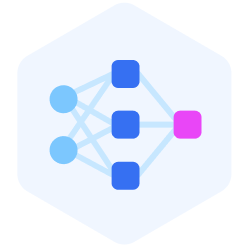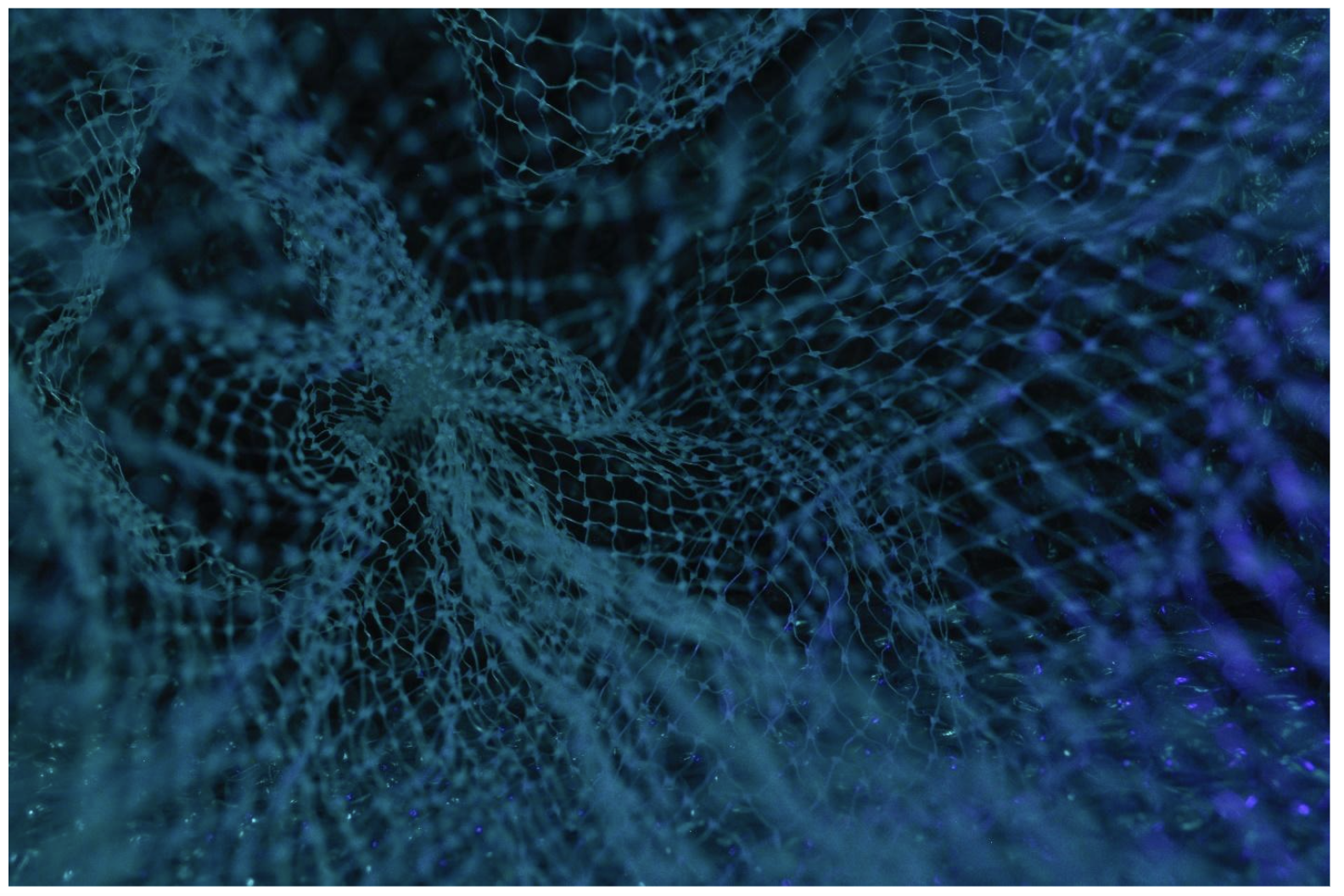What Is a Neural Network? A Developer's Guide

What Is a Neural Network? A Developer's Guide
What Are Neural Networks?
Neural networks are computational models inspired by the human brain's structure. They consist of neurons arranged into layers. Neurons are functions of input data, x, and learnable tensor variables (weights and biases). Think of a neural network as one big F(x) or model. That is, a complex, nonlinear function trained to fit the input data. This paradigm-shifting technology enables machines to comprehend patterns and solve complex problems.

Neural Network Architecture
A neural network is arranged in layers: input, hidden, and output.
- Input layer: This is where data is fed into the network.
- Hidden layers: These intermediate layers process data through multiple sequential transformations. Each hidden layer extracts increasingly abstract and complex features from the input data.
- Output layer: The final layer produces the result based on the processed information from the hidden layers.
Importance of Neural Networks
Neural networks are vital for several reasons.
- Pattern recognition: Neural networks excel at recognizing intricate patterns in data, making them highly effective at tasks like image and speech recognition.
- Adaptability: By training on large datasets, neural networks can adapt and improve their performance over time.
- Nonlinearity: Neural networks can model complex relationships between inputs and outputs, including nonlinear relationships.
- Parallel processing: Neural networks can process data in parallel, speeding up computation for large-scale tasks.
Working Principle of Neural Networks
Neural networks can be used in two modes: training and inference. During training, the network adjusts its connection weights by processing input data and comparing its predictions to the expected results. This process minimizes differences between predictions and actuals using optimization algorithms such as gradient descent. Once trained, the network is ready to make predictions using new, unseen data. Using a trained neural network in this way is called inference.
Types of Neural Networks
Artificial Neural Networks (ANNs)
Artificial neural networks (ANNs), also known as feedforward neural networks, are a foundational type of neural network technology. They consist of input, hidden, and output neurons, mirroring the interconnected structure of the human brain. ANNs excel at pattern recognition by adjusting weights between neurons.
When an ANN incorporates multiple hidden layers, it’s referred to as a DNN (deep neural network). These networks excel at learning complex hierarchies of features from extensive datasets.
How Artificial Neural Networks Work
ANNs use feedforward processing and backpropagation. They consist of interconnected neurons with initialized weights and biases, using methods such as zero or constant initialization, random initialization, Xavier or Glorot initialization. Input data is fed into the input layer and passed to the hidden layers through edges. Neurons in hidden layers apply activation functions, introducing nonlinearity, and the output layer generates predictions or results based on the processed data.
These predictions are compared with the actual results for error calculation. During training, error signals are propagated backward, adjusting weights through optimization algorithms to minimize differences between predictions and actuals.
To learn more, you can refer to this blog about ANNs.
Applications
ANNs play a significant role in a variety of regression and classification tasks which include sentiment analysis, stock price prediction, credit risk assessment, fraud detection, algorithmic trading, anomaly detection, predictive maintenance, etc. Apart from these, ANNs are also the base of a variety of other neural networks like CNNs and RNNs.
Convolutional Neural Networks (CNNs)
Traditional ANNs have fully connected layers that treat each input unit independently. This architecture is not well for handling grid-like data such as images. Convolutional neural networks (CNNs) specialize in processing grid-like data, primarily images and videos, as they’re designed to take advantage of the spatial structure in images. They utilize local connectivity, parameter sharing, hierarchical feature learning, convolutional layers, and pooling layers to automatically extract hierarchical features from input data.
Architecture and Working
- Input layer: The entrance for image data.
- Convolutional layers: These layers detect spatial features, creating structured patterns within images. To identify different features, a set of learnable filters (kernels) are applied to the input images. A CNN typically consists of several convolutional layers stacked on top of one another. The deeper layers learn more abstract and complicated aspects, while the earlier layers catch simple information like edges and textures. The results produced by convolution layers are called feature maps.
- Pooling layers: These layers perform reduction steps in which data dimensions are decreased while retaining essential information. Although you can downsample the data dimensions by controlling the stride of the convolution, an efficient way to do this is to use the pooling layers. Common pooling operations are max pooling and average pooling.
- Fully connected layers: Once you have the essential features of images, fully connected layers are responsible for making the final prediction. Each FC layer is densely connected with its previous and immediate layer and is often used to produce the scores and probabilities for the classification task.
To learn more, you can refer to this comprehensive guide about CNN.

Applications
CNNs revolutionize image classification, image recognition, object detection, image segmentation, medical image analysis, handwriting recognition, etc. All of these tasks involve image data where CNNs excel. But that’s not all. Due to their ability to process grid-like data, CNNs are also applied in a lot of speech-related tasks such as speech recognition, translation, etc.
Recurrent Neural Networks (RNNs)
Although ANNs and CNNs are good for a lot of tasks, they’re not good at handling temporal dependencies and sequences in data. Recurrent neural networks (RNNs) excel at sequential data analysis, which is vital for tasks involving time series data and language processing. RNNs maintain memory through feedback loops. RNNs work on the inherent memory scheme, which allows them to process the current input while remembering the previous one. This memory is achieved through a hidden state that evolves as the network processes each element in the sequence.
Sometimes, RNNs can suffer from a problem called the vanishing gradient, limiting their ability to capture long-range dependencies. Due to this reason, some variations were proposed to RNN architecture that resulted in LSTM and GRU architectures, which, by selectively keeping and updating information over extended contexts, provide improved capabilities for modeling complicated sequences.
Architecture and Working
- Input layer: This layer receives sequential data as input, which can be a sequence of words in a sentence, time series data, etc. Each data point in this sequential data is represented using a vector often known as an input vector.
- Recurrent layer: This layer processes and remembers sequential data. At each time step (t), this layer processes the current input vector and the previous hidden state (output) from the previous time step (t-1) to produce a new state or the output for the current state.
- Output layer: This layer produces the results of sequential analysis. The architecture of this output layer depends on the specific task. For example, in sequence-to-sequence tasks (e.g., language translation), another RNN or a feedforward neural network can be used for the output layer.
To learn more, you can refer to this blog about RNNs.
Applications
RNNs power tasks where the sequence or temporal dependency matters, such as language translation, speech generation, speech recognition, music generation, weather forecasting, predicting financial trends, etc.
Transformers
RNNs are prone to the vanishing gradient problem, which limits their ability to learn and propagate information over long sequences. Also, they’re unable to understand the order of sequence. This is where a transformer architecture helps. Transformers employ self-attention mechanisms that allow them to weigh the importance of different parts of the input sequence.
This mechanism is capable of capturing dependencies between elements in a sequence regardless of their positions, making it highly effective for tasks like language translation, sentiment analysis, and text generation. It also provides parallel processing capabilities, which means it can process the data in parallel to manage long sequences and large datasets efficiently.

Architecture and Working
Input embedding: The input sequence for example text sequence is converted into embeddings. These embeddings are the numerical vector representation of the text, which can be generated using a pre-trained model such as Word2vec or GloVe.
- Positional encoding: The transformer models do not inherently understand the order of elements in a sequence. So, positional encoding is added to the input embeddings that provides information about the position of each element in the sequence, which is done with the help of a combination of trigonometric functions.
- Transformer encoder and decoder layers: Encoder and decoder layers are the building blocks of the transformers, repeated multiple times in the network. Each one is comprised of three main components:
- Multi-head attention: This computes attention scores for each pair of positions in the input sequence. It captures dependencies between elements regardless of their positions. The output of multi-head self-attention is a set of context-aware representations for each input position.
- Feedforward network: The representations obtained from multi-head attention are passed to a feedforward network that applies a series of linear transformations and non-linear activation functions to each position independently.
- Residual connections and layer normalization: Residual connections (skip connections) are added around both the multi-head self-attention and feedforward layers, followed by layer normalization. These components help stabilize training and allow the gradient to flow more effectively.
- Output layer: The top of the decoder is an output later that generates predictions or classifications.
To learn more, check out this blog about Transformer Model.
Applications
Neural networks, particularly transformers, have drastically improved language processing, enabling accurate translation, summarization, and sentiment analysis.
Conclusion
After reading this article, you now know about neural networks and their architecture and working. You have seen different types of neural networks and why they’re the right choice for a specific use case. This article was just a starting point, so please feel free to explore each type in detail for better understanding.
- What Are Neural Networks?
- Neural Network Architecture
- Importance of Neural Networks
- Working Principle of Neural Networks
- Types of Neural Networks
- Convolutional Neural Networks (CNNs)
- Recurrent Neural Networks (RNNs)
- Conclusion
Content
Start Free, Scale Easily
Try the fully-managed vector database built for your GenAI applications.
Try Zilliz Cloud for Free